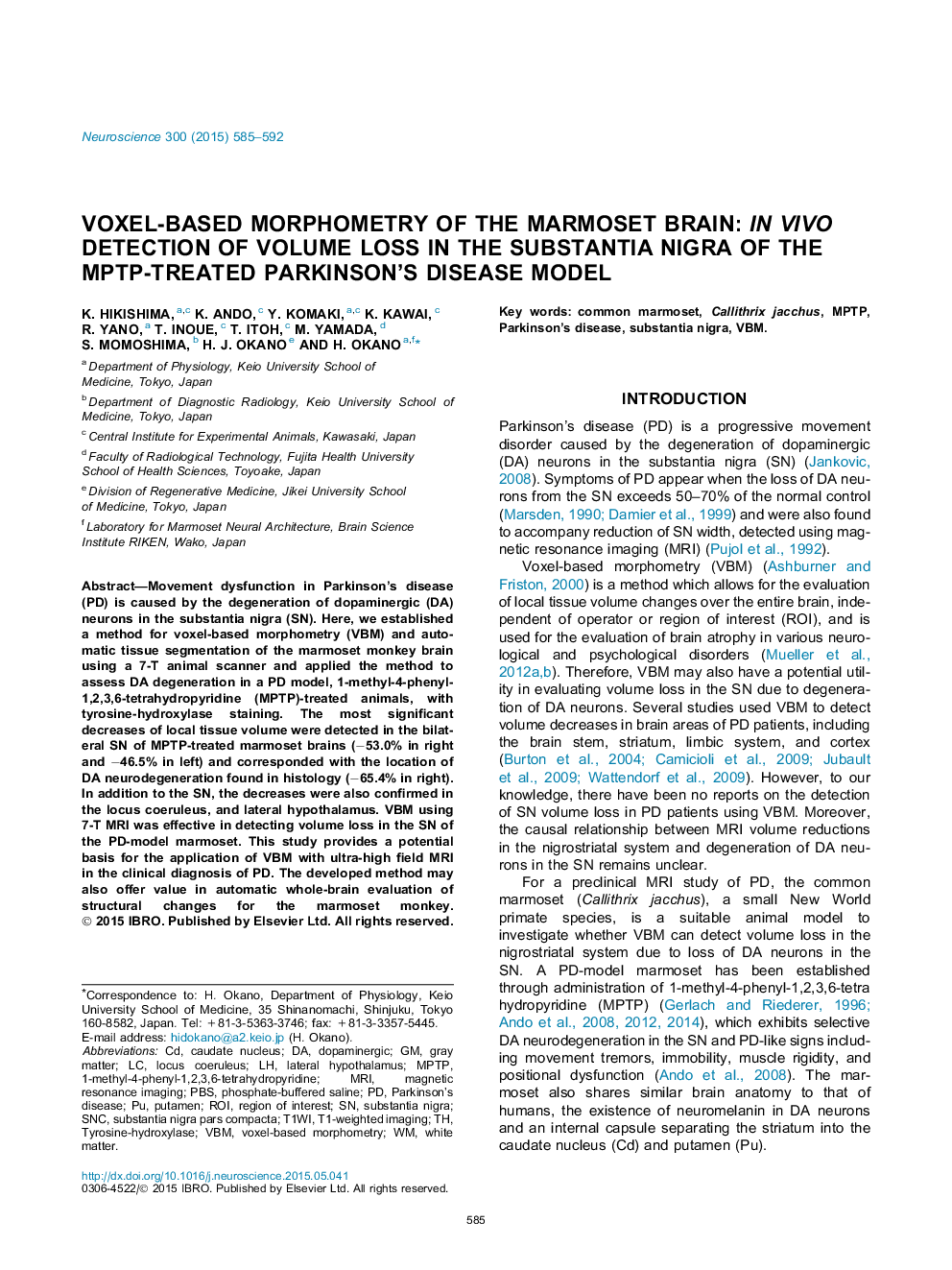| Article ID | Journal | Published Year | Pages | File Type |
|---|---|---|---|---|
| 6272018 | Neuroscience | 2015 | 8 Pages |
â¢An MRI voxel-based morphometry for marmoset monkeys was established.â¢Parkinson's disease model marmosets were evaluated with voxel-based morphometry and in histology.â¢Voxel-based morphometry revealed volume loss mainly in the substantia nigra of Parkinson's disease model marmosets.â¢The volume loss was confirmed as dopaminergic neurodegeneration in the substantia nigra.
Movement dysfunction in Parkinson's disease (PD) is caused by the degeneration of dopaminergic (DA) neurons in the substantia nigra (SN). Here, we established a method for voxel-based morphometry (VBM) and automatic tissue segmentation of the marmoset monkey brain using a 7-T animal scanner and applied the method to assess DA degeneration in a PD model, 1-methyl-4-phenyl-1,2,3,6-tetrahydropyridine (MPTP)-treated animals, with tyrosine-hydroxylase staining. The most significant decreases of local tissue volume were detected in the bilateral SN of MPTP-treated marmoset brains (â53.0% in right and â46.5% in left) and corresponded with the location of DA neurodegeneration found in histology (â65.4% in right). In addition to the SN, the decreases were also confirmed in the locus coeruleus, and lateral hypothalamus. VBM using 7-T MRI was effective in detecting volume loss in the SN of the PD-model marmoset. This study provides a potential basis for the application of VBM with ultra-high field MRI in the clinical diagnosis of PD. The developed method may also offer value in automatic whole-brain evaluation of structural changes for the marmoset monkey.
